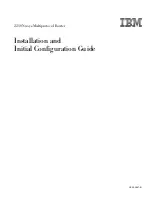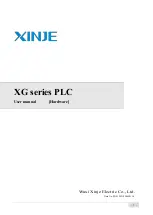
IS-IS Overview
327
The system ID is used in cooperation with the Router ID in practical. For example, a
router uses the IP address 168.10.1.1 of the Loopback 0 as the Router ID, the
system ID in IS-IS can be obtained in the following way:
■
Extend each decimal number of the IP address to 3 digits by adding 0s from the
left, like 168.010.001.001;
■
Divide the extended IP address into 3 sections with 4 digits in each section to
get the System ID 1680.1000.1001.
There are other methods to define a system ID. Just make sure it can uniquely
identify a host or router.
4
SEL
The NSAP Selector (SEL), sometimes present in N-SEL, is similar with the protocol
identifier in IP. Different transport layer protocols use different SELs. All SELs in IP
are 00.
5
Routing method
Since the area is explicitly defined in the address structure, the Level-1 router can
easily recognize the packets sent out of the area. These packets are forwarded to
the Level-2 router.
The Level-1 router makes routing decisions based on the system ID. If the
destination is not in the area, the packet is forwarded to the nearest Level-1-2
router.
The Level-2 router routes packets across areas according to the area address.
NET
The Network Entity Title (NET) is an NSAP with SEL of 0. It indicates the network
layer information of the IS itself, where SEL=0 means no transport layer
information. Therefore, the length of NET is equal to NSAP, in the range 8 bytes to
20 bytes.
Generally, a router only needs one NET, but it can have three NETs at most for
smooth area merging and partitioning. When you configure multiple NETs, make
sure their system IDs are the same.
For example, a NET is ab.cdef.1234.5678.9abc.00, where,
Area = ab.cdef, System ID = 1234.5678.9abc, and SEL = 00.
IS-IS Area
Two-level hierarchy
IS-IS uses two-level hierarchy in the routing domain to support large scale routing
networks. A large routing domain is divided into multiple Areas. The Level-1 router
is in charge of forwarding routes within an area, and the Level-2 router is in
charge of forwarding routes between areas.
Summary of Contents for 4800G Series
Page 26: ...26 CHAPTER NETWORKING APPLICATIONS ...
Page 30: ...30 CHAPTER 1 LOGGING IN TO AN ETHERNET SWITCH ...
Page 62: ...62 CHAPTER 3 LOGGING IN THROUGH TELNET ...
Page 70: ...70 CHAPTER 5 LOGGING IN THROUGH WEB BASED NETWORK MANAGEMENT SYSTEM ...
Page 72: ...72 CHAPTER 6 LOGGING IN THROUGH NMS ...
Page 82: ...82 CHAPTER 8 CONTROLLING LOGIN USERS ...
Page 98: ...98 CHAPTER 9 VLAN CONFIGURATION ...
Page 108: ...108 CHAPTER 10 VOICE VLAN CONFIGURATION ...
Page 119: ...GVRP Configuration Examples 119 DeviceB display vlan dynamic No dynamic vlans exist ...
Page 120: ...120 CHAPTER 11 GVRP CONFIGURATION ...
Page 160: ...160 CHAPTER 17 PORT ISOLATION CONFIGURATION ...
Page 172: ...172 CHAPTER 19 LINK AGGREGATION CONFIGURATION ...
Page 196: ...196 CHAPTER 22 DLDP CONFIGURATION ...
Page 240: ...240 CHAPTER 23 MSTP CONFIGURATION ...
Page 272: ...272 CHAPTER 27 RIP CONFIGURATION ...
Page 364: ...364 CHAPTER 29 IS IS CONFIGURATION ...
Page 426: ...426 CHAPTER 31 ROUTING POLICY CONFIGURATION ...
Page 442: ...442 CHAPTER 33 IPV6 RIPNG CONFIGURATION ...
Page 466: ...466 CHAPTER 35 IPV6 IS IS CONFIGURATION ...
Page 488: ...488 CHAPTER 36 IPV6 BGP CONFIGURATION ...
Page 498: ...498 CHAPTER 37 ROUTING POLICY CONFIGURATION ...
Page 540: ...540 CHAPTER 40 TUNNELING CONFIGURATION ...
Page 552: ...552 CHAPTER 41 MULTICAST OVERVIEW ...
Page 604: ...604 CHAPTER 43 MLD SNOOPING CONFIGURATION ...
Page 628: ...628 CHAPTER 46 IGMP CONFIGURATION ...
Page 700: ...700 CHAPTER 48 MSDP CONFIGURATION ...
Page 812: ...812 CHAPTER 57 DHCP SERVER CONFIGURATION ...
Page 822: ...822 CHAPTER 58 DHCP RELAY AGENT CONFIGURATION ...
Page 834: ...834 CHAPTER 61 BOOTP CLIENT CONFIGURATION ...
Page 850: ...850 CHAPTER 63 IPV4 ACL CONFIGURATION ...
Page 856: ...856 CHAPTER 64 IPV6 ACL CONFIGURATION ...
Page 860: ...860 CHAPTER 65 QOS OVERVIEW ...
Page 868: ...868 CHAPTER 66 TRAFFIC CLASSIFICATION TP AND LR CONFIGURATION ...
Page 888: ...888 CHAPTER 69 PRIORITY MAPPING ...
Page 894: ...894 CHAPTER 71 TRAFFIC MIRRORING CONFIGURATION ...
Page 904: ...904 CHAPTER 72 PORT MIRRORING CONFIGURATION ...
Page 930: ...930 CHAPTER 74 UDP HELPER CONFIGURATION ...
Page 990: ...990 CHAPTER 79 FILE SYSTEM MANAGEMENT CONFIGURATION ...
Page 1000: ...1000 CHAPTER 80 FTP CONFIGURATION ...
Page 1020: ...1020 CHAPTER 82 INFORMATION CENTER CONFIGURATION ...
Page 1038: ...1038 CHAPTER 84 SYSTEM MAINTAINING AND DEBUGGING ...
Page 1046: ...1046 CHAPTER 85 DEVICE MANAGEMENT ...
Page 1129: ...SSH Client Configuration Examples 1129 SwitchB ...
Page 1130: ...1130 CHAPTER 88 SSH CONFIGURATION ...
Page 1160: ...1160 CHAPTER 90 RRPP CONFIGURATION ...
Page 1180: ...1180 CHAPTER 91 PORT SECURITY CONFIGURATION ...
Page 1192: ...1192 CHAPTER 92 LLDP CONFIGURATION ...
Page 1202: ...1202 CHAPTER 93 POE CONFIGURATION ...
Page 1218: ...1218 CHAPTER 96 HTTPS CONFIGURATION ...
















































